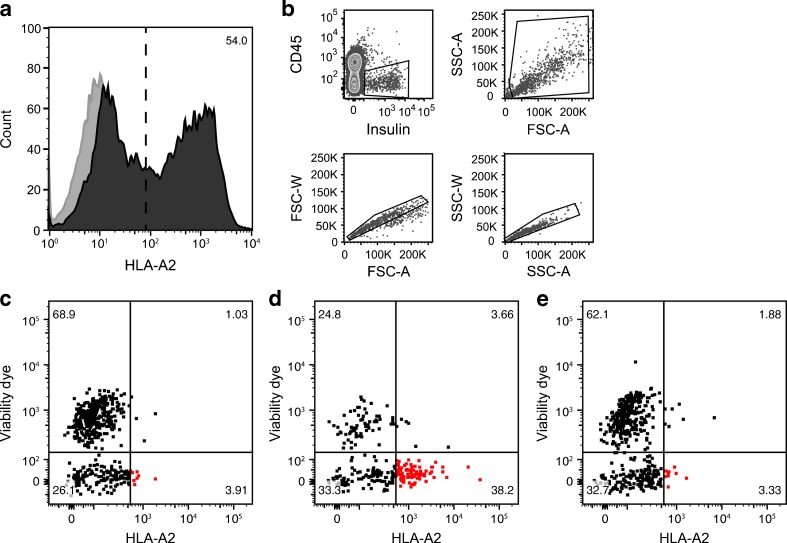Fig. 3.
PPI-specific CTLs recognise and kill hESC-derived beta cells. (a) hESC-ECs were transduced with HLA-A2 for compatibility with autoreactive CTL clone 1E6. FACS analysis of HLA-A2 expression showed expression on >50% of hESC-ECs (dark grey; isotype control in light grey). (b) After 4 days’ upregulation of the transgene, hESC-derived cells were incubated with autoreactive CTL clone 1E6 recognising PPI peptide in HLA-A2 or clone 18 recognising an irrelevant CMV peptide for 20 h. Specific cytotoxicity was assessed by FACS by gating insulin-positive, CD45-negative, single cells. (c, d) Gated beta cell-like cells expressing HLA-A2 (red) were killed overnight with >90% efficiency by PPI-specific CTLs (c) compared with non-specific CTLs recognising CMV peptide (d). (e) The killing efficiency may be at maximum since this could not be increased by pulsing the beta cell-like cells with PPI peptide before exposure to PPI-specific CTLs. FSC-A, forward scatter: area; FSC-W, forward scatter: width; SSC-A, side scatter: area

